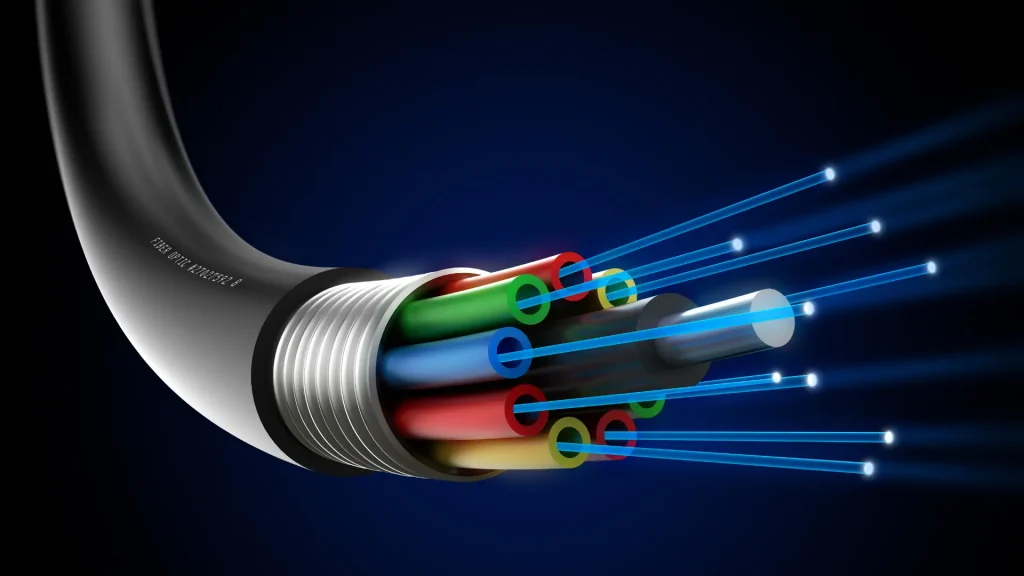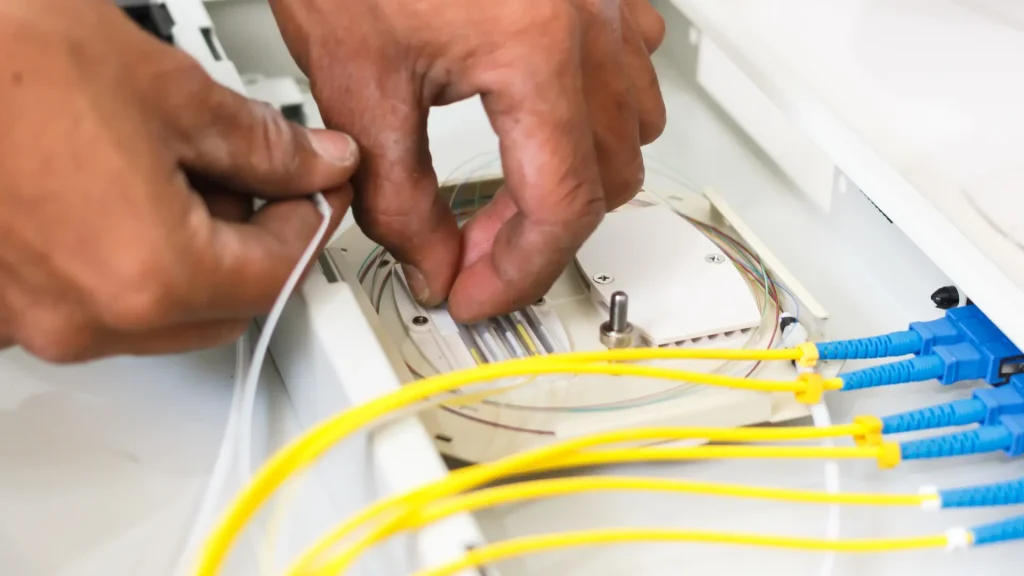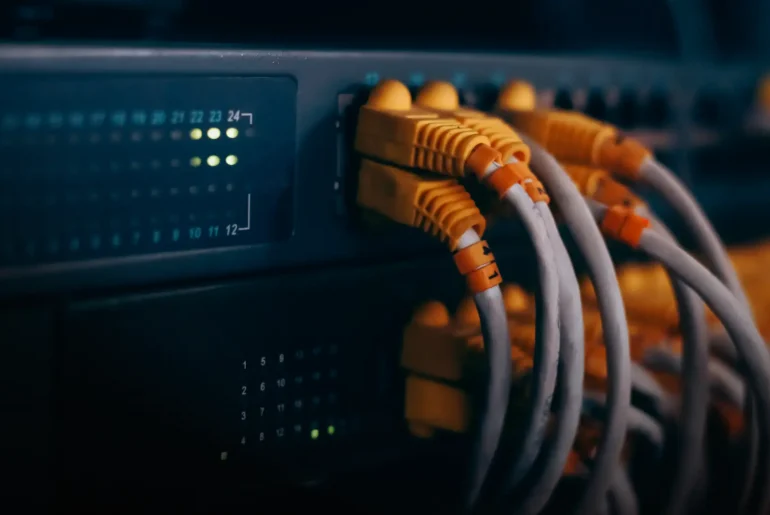Investment Strategies in Telecommunications: From Fiber to Bundled Growth
What is The Main Shift in the Telecom Strategies Globally?
The global telecom sector is entering a new era, that need solution about Investment Strategies in Telecom beyond networks and infrastructure. Revenue growth is flattening. Infrastructure costs remain high. Customer churn is climbing as price wars erode margins. Despite billions poured into 5G and fibre, many operators are asking the same question: Where will the next wave of profitability come from?
The value of ARPU remains stagnant in established markets because OTT services and digital-first companies continuously take away customer value that used to belong to telcos. Network ROI periods in certain areas exceed ten years. People today want their internet services to deliver quick speeds and flexible options and they expect advanced security features and personalized intelligent solutions.
In this landscape, Investment Strategies in Telecom must evolve. The old model — build more, charge more — is no longer sustainable. Operators who want to succeed in the future need to move past basic connectivity by offering broadband and mobile services together with digital and cloud and security solutions.
This is where Aipix enters the story. The global Value-Added Services (VAS) and Video & Security-as-a-Service (VSaaS) platforms like Aipix allow telcos and ISPs to generate additional revenue without requiring significant capital expenditures (CapEx). Moreover, building extra connected systems that enhance customer retention and boost ARPU expansion.
The following analysis examines future telecom investment approaches. It contains data and projection analysis which provides operators with essential guidance for their transition from fixed network services to combined service expansion. From moving “from fixed to bundle”, that means transforming a basic fibre offering into a complete digital experience.
Experiencing deployment of global VAS and VSaaS platform Aipix enables telcos and ISPs to transform their Investment Strategies, get revenue growth, service expansion and customer retention.

What Are the Key Investment Trends in Telecom Heading into 2026?
The telecommunications industry is seeing an unmistakable shift: capital investment is no longer just about expanding coverage. It’s about enabling smarter, revenue-driven ecosystems.
Here are the most impactful Investment Strategies in Telecom emerging as we move toward 2026:
- The expansion of fibre and 5G networks remains essential yet operators now see them as essential infrastructure for delivering advanced services.
- Telcos now combine broadband services with mobile and video and IoT under a single unified ecosystem through bundled and converged offerings.
- Operators generate additional revenue streams through digital service monetization by offering value-added services that include entertainment and security solutions.
- Cloud and automation enable telecom operator and ISPs to decrease capital expenditures while achieving better scalability through operational efficiency.
- The VSaaS and VAS segments have emerged as a rapidly expanding business sector which connects network infrastructure to customer satisfaction and business value.
According to PwC’s 2025 Global Telecom Outlook, global telecom revenues had reached US$1.1 trillion in 2023. And now growing at a 4.3% annual rate toward 2026 as digital services expand across both developed and emerging markets.
ARPU Growth Outlook. Where Is the Real Upside?
Telecom leaders experience the most significant boardroom stress and hope regarding Average Revenue Per User (ARPU) metrics. The business depends on ARPU as its vital indicator. It shows whether operators generate revenue through intelligent strategies or simply maintain their current position.
Telcos have encountered a difficult situation. Since traffic volumes increased substantially yet their ARPU has not shown corresponding growth during the previous few years. The network infrastructure now handles unprecedented data volumes but user revenue has not increased accordingly. The market competition for prices combined with unlimited data plans and bundled services has resulted in declining profit margins. The expenses for building fibre networks, deploying 5G and cloud infrastructure keep rising while revenue per user remains stagnant.
But that trend is beginning to shift. The adoption of new monetization models such as premium data tiers and recurring Value-Added Services (VAS) / Video & Security-as-a-Service (VSaaS) enables operators to discover new revenue streams. The industry now emphasizes generating value instead of focusing on volume.

What are the numbers prove it
The telecom industry now uses ARPU as its main profitability indicator which shows increasing worldwide trends.
In India, ARPU is projected to reach ₹225–230 per user/month by fiscal 2026, up roughly 25% from 2024. This surge stems from increased 5G adoption and a wave of premium data plans.
In the UK, BT’s broadband ARPU climbed to £42.2, driven by upgrades to FTTP and value-added content bundles.
Across Europe and Southeast Asia, telecom ARPU is expected to grow at 3–5% CAGR through 2026, with strong returns in rural broadband and hybrid fibre-5G zones.
Meanwhile, global telecom CapEx intensity is projected to decline from 18% in 2023 to around 16% in 2026, freeing up capital for investment in higher-margin services such as VSaaS, smart home ecosystems, and enterprise cloud solutions.
The main lesson shows that infrastructure matters. But service diversification represents the actual path to expansion and Aipix converts basic connectivity into expandable revenue streams.
From Fixed to Bundle. The New Era of Telco Value Creation
Traditional telecom services including voice and broadband and data have achieved their peak development stage. The future growth is on telecommunications platforms. That will emerge from telcos’ ability to evolve beyond their current role as connectivity providers into complete digital service (telco to techco).
The evolution “from fixed to bundle” is central to modern Investment Strategies in Telecom:
- The evolution of fibre technology progresses from basic fibre connections to complete bundles. It combines internet services like video surveillance, smart home, entertainment.
- The company aims to enhance customer loyalty and decrease churn rates. The 2024 Deloitte study shows that customers who use multiple services from one provider have a 50% lower chance of switching to another provider.
- Expanding the service portfolio, by offering integrated packages enhances cross-sell opportunities.
- Accelerating ARPU growth, as customers adopt bundles, telcos see an average ARPU uplift of 10–15% per bundled product added.
This model is particularly powerful in emerging markets, where affordability and convenience drive adoption. In mature markets, it provides differentiation in highly competitive environments.
How Aipix VAS and VSaaS Platforms Enable Next-Generation Growth
Every telecom executive knows the dilemma: you’ve built a state-of-the-art network — 5G, fibre, edge — yet profitability still feels just out of reach. The market now demands more than just infrastructure to succeed. The future of growth depends on the value-added services. And operators can easily create them from their existing network infrastructure rather than raw bandwidth capacity.
The time has arrived for VAS and VSaaS to evolve from supplementary features into core transformation drivers. The competitive landscape has shifted for operators who used to battle over network reach and costs because they now compete through the development of comprehensive ecosystems and intelligent services. The question isn’t just how fast is your network, but what can your network do for your customers?
That’s exactly where Aipix steps in.
As a global VAS and VSaaS platform provider, Aipix gives telcos and ISPs the ability to innovate faster, expand revenue streams, and differentiate without rebuilding their technology stack from scratch. It bridges the gap between connectivity and customer value, converting each network connection into a service opportunity with extra additional monetization.
Here’s how Aipix enhances Investment Strategies in Telecom:
- Launch value-added services instantly without developing backend infrastructure.
- Offer advanced smart security and video surveillance (VSaaS), easily bundled with broadband or IoT offerings.
- Create smart-home and enterprise packages, integrating cloud storage, AI-based analytics, archive storage for up to 30 days.
- Drive ARPU growth, where every new service module (Smart Intercom Module, VideoAnalytics Module, Access Control Module) becomes an extra revenue-producing layer.
- Scale seamless and limitless: one platform supports multiple locations, helping operators enter new markets with minimal CapEx.
Aipix’s plug-and-play architecture enables telcos to transform their basic connectivity services into complete digital service platforms which generates better ROI and decreases customer churn and establishes enduring customer relationships for next-generation telecom success.
What Risks Should Telcos Consider and How Can They Be Mitigated?
No investment strategy is without challenges.The main risks for telecom operators stem from excessive capital spending and regulatory restrictions to price-conscious consumer behavior.
Leading operators address these risks through 3 main Investment Strategies in Telecom.
- Use modular bundle strategies to provide affordable value to customers through data analytics-based offer customization and churn prediction.
- Establish strategic alliances with content providers and security companies to expand their business reach.
- Implement phased investment strategies which start with high-ARPU customer segments before expanding to broader markets.
As a result, telecoms and ISPs who implement these strategies with Aipix VSaaS scalable platforms achieve risk reduction while maintaining quick innovation cycles at lower capital costs.

Telcos 2026 Outlook: The Financial Horizon
Every investment cycle in telecom history has been defined by a turning point. And 2026 is shaping up to be one of those moments. After years of heavy infrastructure spending, operators are finally positioned to reap tangible financial returns. The era of “build and wait” is giving way to “build and monetize.”
The telecommunications sector now experiences financial benefits from telcos and ISPs who adopted value-creation focused investment approaches instead of capacity expansion only. The combination of 5G maturity, fibre saturation, and the rapid scaling of VAS and VSaaS recurring models transforms balance sheets and unlocking new layers of profitability.
In many ways, 2026 represents the turning point when telecom will shift from being a basic utility service to a digital service-based economy. The industry shows signs of growth through disciplined capital allocation and expanding business potential.
By 2026, telecom investment strategies are expected to yield measurable results:
- India: ARPU at ₹225–230/month; RoCE at 11%, the highest in a decade.
- Europe: steady ARPU growth (2.5–4% CAGR) and broadband expansion into underserved regions.
- Global: telecom revenues to grow at ~2.9% CAGR, with VAS and cloud-driven services accounting for nearly 20% of incremental revenue.
- CapEx intensity: down to 16%, reflecting efficiency gains and higher ROI from service innovation.
The data shows that 2026 will generate its highest returns through diversified strategies instead of network expansion. Aipix platform enables operators to convert their network connections into ongoing revenue streams which creates their competitive advantage.
Building a Future-Ready Investment Strategies in Telecom Roadmap
To create long-term growth and sustainability, telcos should structure their Investment Strategies in Telecommunications around five key pillars:
- Assess infrastructure maturity. Identify where fibre or 5G upgrades unlock service bundling opportunities.
- Define clear bundle tiers. Offer connectivity + VAS/VSaaS add-ons to suit different customer segments.
- Partner with a proven platform like Aipix to reduce go-to-market time.
- Localize offerings, by adapting bundles to regional needs (e.g., smart home in Europe, rural video monitoring in India).
- Measure KPIs rigorously (ARPU, churn, NPS, and incremental service revenue).
Conclusion. Redefining Growth Through Smarter Investment
Telecom operators and ISP worldwide need to change their investment approach to determine the future growth of their industry. So that the Investment Strategies in Telecom need to shift from their current hardware-based infrastructure-first approach to digital value creation methods.
Telecom and ISP leaders need to understand that the time of basic network connectivity has passed because intelligent service-oriented expansion has started. The companies that will achieve success in 2026 will focus on developing innovative solutions which transform their networks into interconnected systems and their user base into active communities.
Aipix is built for that future: being a leading VSaaS company, it provides operators with its software solution to speed up market entry. The Aipix Platform is proven to boost ARPU while decreasing churn rates and opening fresh revenue streams at minimal capital expenditure and operational simplicity.
It’s time to move from fixed to bundle, from connectivity to experience, from cost center to growth engine. Explore how Aipix can power your next-generation telecom strategy today.
Get your "VAS & VSaaS Report 2025"
Leave your e-mail and we’ll send you the file





